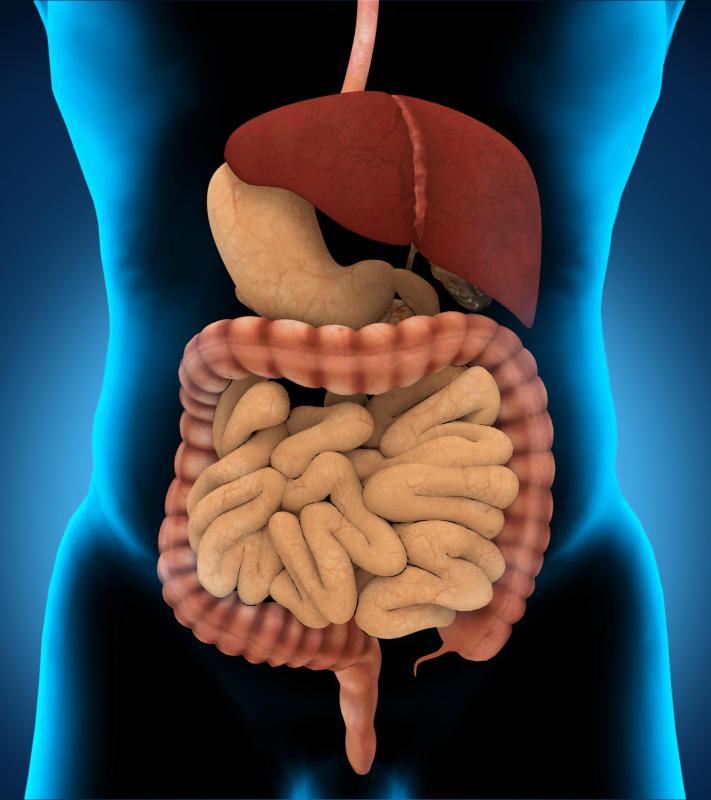At WiseGEEK, we're committed to delivering accurate, trustworthy information. Our expert-authored content is rigorously fact-checked and sourced from credible authorities. Discover how we uphold the highest standards in providing you with reliable knowledge.
What is the Connection Between Probiotics and Enzymes?
Probiotics and enzymes work in tandem in the gastrointestinal tract. Both break down food, thus aiding in better digestion. Enzymes, however, go one step further. They nourish probiotics and enable them to stay alive and multiply. This is because probiotics eat the byproducts created when enzymes chemically digest foods, breaking them down into simple nutrients that probiotics can easily absorb.
Foods created by enzymes for the purpose of supporting probiotics include fatty acids, simple carbohydrates, and amino acids. The food exchange between probiotics and enzymes also includes various minerals and vitamins produced by enzymes. There are nine different types of enzymes that produce these nutritive byproducts. They operate in specialized areas of the gastrointestinal tract, such as the large intestine, small intestine, and pancreas.

Protease, amylase, and lipase are considered the three main digestive enzymes. Lipase digests fats known as lipids and produces fatty acids as a byproduct of that digestion. The job of amylase is to target starches and carbohydrates, breaking them down into simple sugars that are basic enough for probiotics to easily consume. Protease, particularly the protease enzyme known as pepsin, digests proteins in order to produce amino acids.

Secondary digestive enzymes include sucrase, maltase, and lactase. Lactase digests milk sugar, which is also known as lactose. Maltase chemically reduces the malt sugar known as maltose to glucose. Sucrase digests sucrose, forming either fructose or glucose. Remaining enzymes carbohydrase, pectinase, and hemicellulase are considered non-crucial to probiotics, although they do aid the human body in digestion.
The amino acids and starches created in chemical digestion are not just useful to probiotics and enzymes. Humans can also absorb this nutrition through organ linings. Protease enzymes primarily serve the probiotic lactobacillus in the small intestines where amino acids can pass through the membrane into the bloodstream. Amylase, meanwhile, is paired with probiotics in the pancreas and salivary glands where the simple sugars released by amylase can be absorbed through the mouth or pancreatic membrane.
While both probiotics and enzymes convert food into energy through digestion, that is not the primary benefit of probiotics. Probiotics protect the immune system and increase its effectiveness by removing toxins and malicious bacteria. As a detoxifier, probiotics have been lauded for staving off ailments ranging from allergies to colon cancer. These beneficial microorganisms can help the body defeat harmful bacteria such as salmonella and E.coli. The more food they get from enzymes, the more probiotics can multiply and provide health protection.
As people age or endure sickness, the amount of probiotics in the body can plummet. Supplements with probiotics and enzymes can boost the body’s beneficial microflora. Those using supplements or live foods to increase levels of probiotics and enzymes in the body usually must remain consistent since both probiotics and enzymes are regularly depleted by the body and must get replenished.
Some critics of supplemental probiotics and enzymes argue that enzymes, particularly protease, will destroy some protein-based probiotics. Much research counters this claim, however. To ensure no detrimental interaction, many nutritionists suggest that enzymes be taken before mealtime and probiotics afterward.
AS FEATURED ON:
AS FEATURED ON:












Discuss this Article
Post your comments